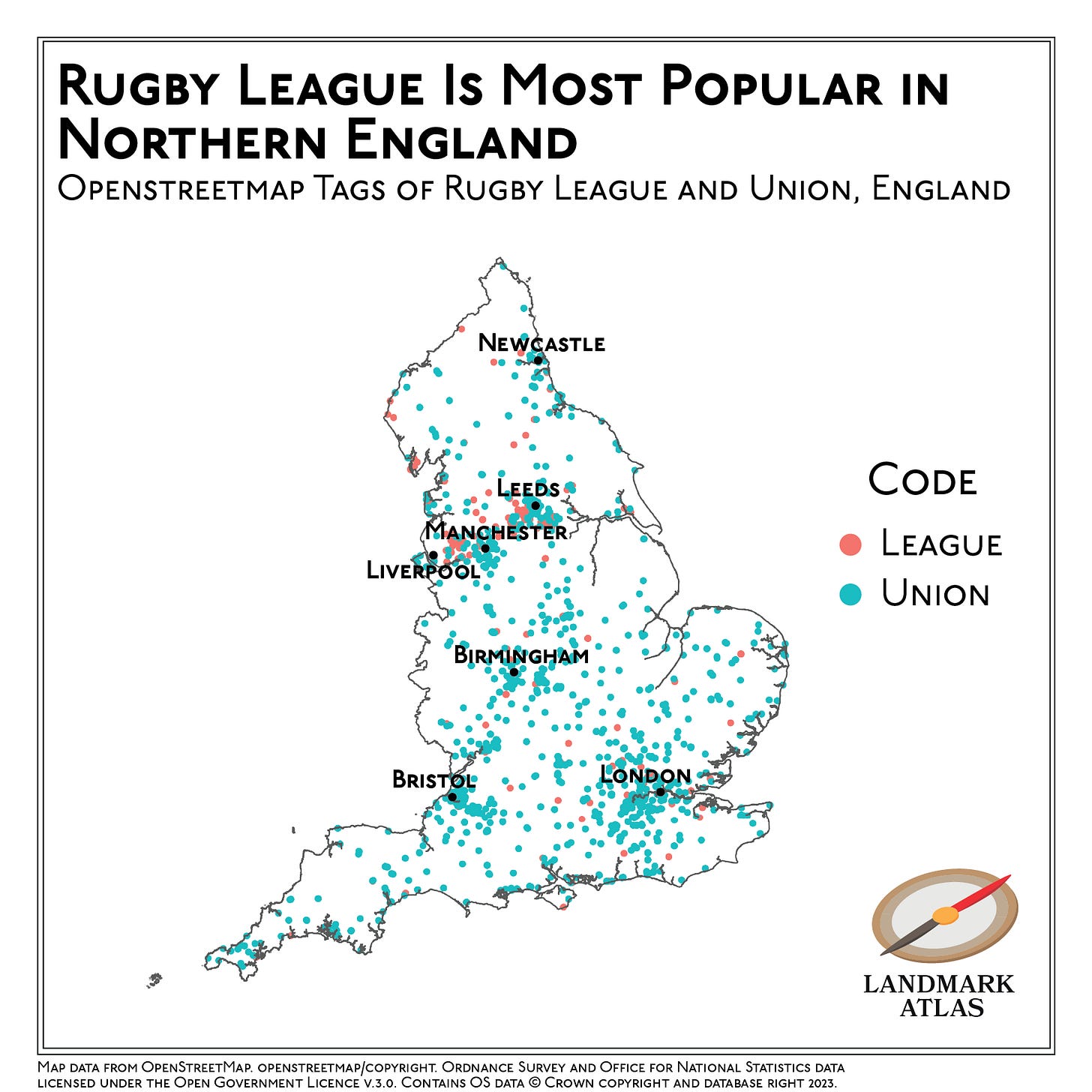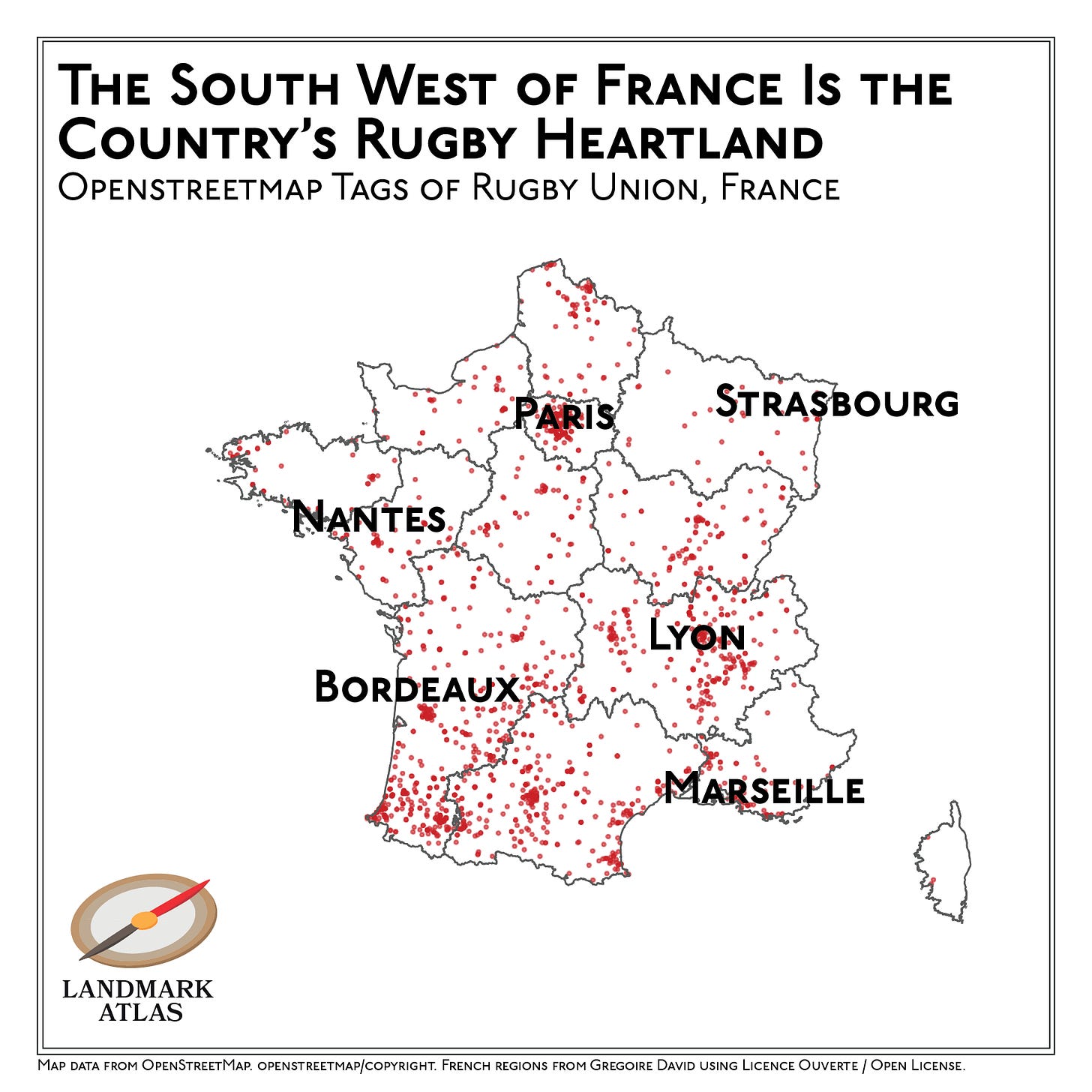The South West is England's Rugby Heartland
As the Rugby World Cup unfolds, a look at the popularity of the game in its country of birth

I was never much good at rugby.
A skinny teenager like me never had the brawn that my unglamorous position of second row demanded. But I was a team player, showed up for training, didn’t complain or try anything fancy on the rare occasions that I had the ball in my hands.
For these reasons my school rugby coach liked me despite my lack of star quality. He was old-school: the kind of coach who wore shorts in all weathers and who was never happier than with a rugby ball in hand heading off to run a training session.
One day in my final year he asked me which university I was hoping to go to. I told him I hoped to go to Bristol.
“Good rugby culture there,” he replied.
Elite rugby in the South West is strong
My former coach was reflecting the view that the South West of England is a traditionally strong area of the country at rugby.
At the elite level the South West clearly is a dominant force in the English game.
Four of the ten clubs in the upcoming season of the Gallagher Premiership that will begin in October are in the south west of England: Bath, Bristol Bears, Gloucester and Exeter Chiefs. No other region of the country has more than two.
The Chiefs and Bath Rugby have both been champions of England.
In contrast, no football club from the South West has ever been champions of England, even though the professional football league system has been running for about 100 years longer than the rugby equivalent. The region has one representative, Bournemouth, in the 20 clubs in this season’s Premier League.
This strength is replicated at a local level
My former coach was also right at the local level.
This map takes all 2,022 features on OpenStreetMap (OSM) currently tagged as ‘rugby union’ and compares them to the population of each English county. Features are added by OSM contributors and can be rugby pitches, clubs, sports centres and the like.
In the darker green areas there are more rugby facilities per head of the population.
The county with the most rugby facilities per head is Gloucestershire. Three other counties from the South West make the top 10: Somerset in third, Bristol in seventh and Wiltshire in tenth.
The south west Midlands border the region. This part of England also has a dense concentration of rugby pitches and clubs.
Warwickshire comes fourth nationally. The county is home to the town of Rugby and Rugby School, where according to legend William Webb Ellis picked up the ball and ran with it during a game of football two hundred years ago, giving birth to the game.
Rugby mad Wales
At the time of writing the people of Wales are still celebrating their comfortable 40-6 victory over old foes Australia at the World Cup.
The map shows that parts of Wales have more rugby facilities per head than anywhere in England.
In fact four Welsh counties have more pitches, clubs and the like than Gloucestershire, the highest in England. These are Dyfed, Gwynedd, Powys and Gwent.
Overall Wales has 10.3 rugby facilities for every 100,000 people in the country, far outstripping England’s figure of 3.6.
Rugby League’s heartland is in Northern England
Rugby League split off from Union in the late 19th century. Class issues over pay and professionalism caused the split.
Since then it has remained popular in Britain primarily in its heartlands of Lancashire and Yorkshire.
The map below shows that rugby union (in blue) is popular up and down England, whereas the only place where league (in red) can compete is in a corridor of Northern England from Merseyside in the west to Hull in the east.
Rugby has to fight its corner against football
Rugby is in large part a game of territory. Players from both sides put their bodies on the line to gain and not to concede territory on the pitch1.
Territory is important because it’s very difficult to lose the game if you are camped in your opponent’s half. Defence is physically and psychologically harder than attack and eventually, if the pressure builds, a defender will usually make a mistake and allow a score.
Just like in the game itself, rugby has to fight its corner for territory in countries where football is the national game.
This is the case in France, the host nation of the 2023 World Cup. Football is popular throughout the country, but outside of Paris rugby is strong in the south west, like England, as well as around Lyon.
Caveats and a note on the source data
The data on rugby pitches, clubs and the like comes from OpenStreetMap. As ever, I’m grateful to that website for its unique repository of available map data.
However - it’s not a definitive source of rugby locations in Britain or the world. It relies on voluntary contributors adding features and tagging them correctly. A better
source of data would have been the England Rugby club directory, but they don’t seem to make that data publicly available and have a policy against web scraping, so I chose OSM instead.
There is evidence that professional rugby players have an increased risk of neurodegenerative diseases such as motor neurone disease. Famous former players such as Steve Thompson have early-onset dementia. Heading the ball in football also seems to be a risk. Take care out there, especially with children.






